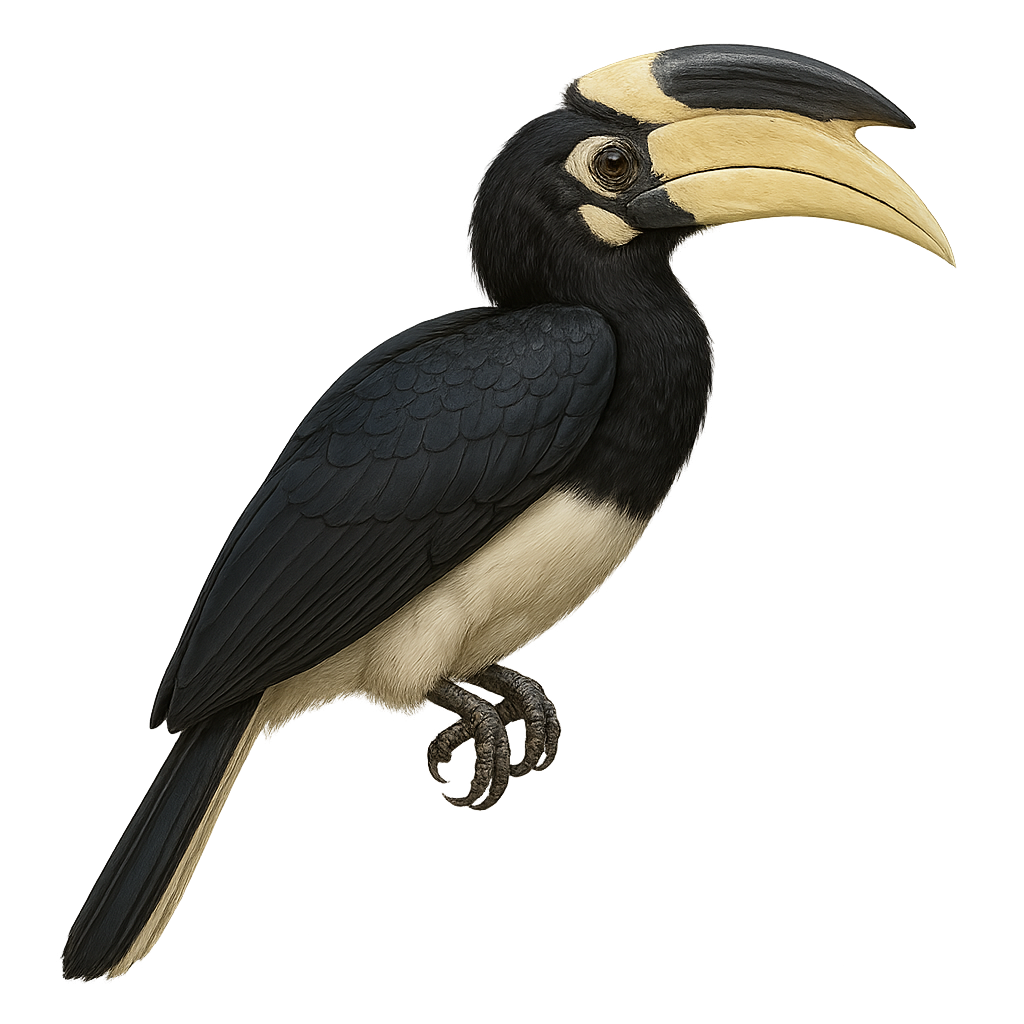Your wildlife photography guide.
Explore the malabar pied hornbill in detail, study its behavior, prepare your shots.
Where to observe and photograph the malabar pied hornbill in the wild
Learn where and when to spot the malabar pied hornbill in the wild, how to identify the species based on distinctive features, and what natural environments it inhabits. The WildlifePhotographer app offers tailored photography tips that reflect the malabar pied hornbill’s behavior, helping you capture better wildlife images. Explore the full species profile for key information including description, habitat, active periods, and approach techniques.
Malabar Pied Hornbill
Scientific name: Anthracoceros coronatus

IUCN Status: Near Threatened
Family: BUCEROTIDAE
Group: Birds
Sensitivity to human approach: Suspicious
Minimum approach distance: 10 m
Courtship display: March to April
Incubation: 28-30 jours
Hatchings: April to May
Habitat:
Tropical rainforests, wooded savannas, mangroves
Activity period :
Primarily active during the day, with peak activity in the morning and late afternoon.
Identification and description:
The Malabar Pied Hornbill, or Anthracoceros coronatus, is a captivating bird found in the humid tropical forests of the Indian subcontinent. Recognizable by its large bill adorned with a wavy casque, it sports a distinctive black and white plumage. This sociable bird often lives in small groups and primarily feeds on fruits, but also consumes insects and small vertebrates. It plays a crucial role in seed dispersal, aiding forest regeneration. Malabar Pied Hornbills are monogamous and nest in tree cavities, where the female is sealed in during the nesting period, leaving only a small opening for the male to feed her. Although their population is stable, deforestation poses a threat to their natural habitat.
Recommended lens:
400mm – adjust based on distance, desired framing (portrait or habitat), and approach conditions.
Photography tips:
To photograph the Malabar Pied Hornbill, it is advisable to use a telephoto lens of at least 400mm to capture detailed images without disturbing the bird. Look for a spot where they feed or nest, and be patient. Morning is often the best time to observe them, as they are more active. Use a tripod to stabilize your camera and wait for the bird to perch on a clear branch for a sharp shot. Be discreet and avoid sudden movements to prevent scaring it away.
From knowledge to field practice
A species profile helps you understand an animal. In the field, the challenge is often different. Remembering your own observations.
The WildlifePhotographer app allows you to:
• record your personal observations
• note locations, dates, and behaviors
• revisit your field references over time
• build a private and long-term field logbook
The app does not provide observation locations.
It helps you organize what you actually observe, with respect for wildlife.

